pandas vs excel
01.创建文件 import pandas as pd df = pd.DataFrame({'ID':[1,2,3],'Name':['Tim','','Nick']}) #创建DataFrame df
df = df.set_index('ID') df
df.to_excel(r"C:\Users\Administrator\Desktop\output.xlsx") #写入到Excel
02.读取文件 import pandas as pd people = pd.read_excel(r"C:\Users\Administrator\Desktop\people.xlsx") #读取Excel文件 print(people.shape) #输出行列数 print(people.columns) #输出列名 print(people.head()) #输出头5行 print(people.tail(3)) #查看数据的最后3行 people = pd.read_excel(r"C:\Users\Administrator\Desktop\people.xlsx", header=1) #读取Excel文件,默认以第二行为列名 people = pd.read_excel(r"C:\Users\Administrator\Desktop\people.xlsx", header=None) #读取Excel文件,默认没有列名 #将会自动用1,2,3....来代替列名 people.columns = ['ID','Type','FirstName','MiddleName','LastName'] #设置列名 people = people.set_index('ID') people.set_index('ID',inplace=True) #直接在原来的DataFrame上进行修改,不会生成新的dataframe people people.to_excel(r"C:\Users\Administrator\Desktop\output.xlsx") df = pd.read_excel(r"C:\Users\Administrator\Desktop\output.xlsx",index_col='ID') #指明读取文件的时候 index 为 ID 列
03.行、列、单元格 import pandas as pd s1 = pd.Series() s1.index ''' Index([], dtype='object') ''' d = {'x':100,'y':200,'z':300} print(d.keys()) print(d.values()) print(d['x']) ''' dict_keys(['x', 'y', 'z']) dict_values([100, 200, 300]) 100 ''' s1 = pd.Series(d) print(s1.index) print(s1.data) s1 ''' Index(['x', 'y', 'z'], dtype='object') <memory at 0x00000187AE02D648> x 100 y 200 z 300 dtype: int64 ''' L1 = [100,200,300] L2 = ['x','y','z'] s1 = pd.Series(L1,index=L2) s1.index ''' Index(['x', 'y', 'z'], dtype='object') ''' s1 = pd.Series([100,200,300],index=['x','y','z']) s1.index ''' Index(['x', 'y', 'z'], dtype='object') ''' s1 = pd.Series([1,2,3],index=[1,2,3],name='A') s2 = pd.Series([10,20,30],index=[1,2,3],name='B') s3 = pd.Series([100,200,300],index=[1,2,3],name='C') df = pd.DataFrame({s1.name:s1,s2.name:s2,s3.name:s3}) df
s1 = pd.Series([1,2,3],index=[1,2,3],name='A') s2 = pd.Series([10,20,30],index=[1,2,3],name='B') s3 = pd.Series([100,200,300],index=[1,2,3],name='C') df = pd.DataFrame([s1,s2,s3]) df
s1 = pd.Series([1,2,3],index=[1,2,3],name='A') s2 = pd.Series([10,20,30],index=[1,2,3],name='B') s3 = pd.Series([100,200,300],index=[2,3,4],name='C') df = pd.DataFrame({s1.name:s1,s2.name:s2,s3.name:s3}) df
04.数字区域读取、填充数字、填充日期 import pandas as pd from datetime import date,timedelta datafile = r"C:\Users\67001\Desktop\Books.xlsx" books = pd.read_excel(datafile,skiprows=3,usecols="C:F",index_col=None,dtype={'ID':str,'InStore':str,'Date':str}) #选择从第四行开始读,读C:F列 print(books['ID']) print(type(books['ID'])) ''' 0 NaN 1 NaN 2 NaN 3 NaN 4 NaN 5 NaN 6 NaN 7 NaN 8 NaN 9 NaN 10 NaN 11 NaN 12 NaN 13 NaN 14 NaN 15 NaN 16 NaN 17 NaN 18 NaN 19 NaN Name: ID, dtype: object <class 'pandas.core.series.Series'> ''' books['ID'].at[0] = 100 books
def add_month(d,md): yd = md // 12 m = d.month + md % 12 if m != 12: yd += m // 12 m = m % 12 return date(d.year + yd,m,d.day) 在Series上进行修改 start = date(2018,1,1) for i in books.index: books['ID'].at[i] = i + 1 books['InStore'].at[i] = 'Yes' if i % 2 == 0 else 'No' # books['Date'].at[i] = start + timedelta(days=i) # 日期加一天 # books['Date'].at[i] = date(start.year + i,start.month,start.day) #日期加一年 books['Date'].at[i] = add_month(start, i) books
在DataFrame上进行修改 start = date(2018,1,1) for i in books.index: books.at[i,'ID'] = i + 1 books.at[i,'InStore'] = 'Yes' if i % 2 == 0 else 'No' books.at[i,'Date'] = add_month(start, i) books
books.set_index('ID',inplace=True) books.to_excel(r"C:\Users\67001\Desktop\Books1.xlsx")
05.函数填充,计算列 import pandas as pd books = pd.read_excel(r"C:\Users\67001\Desktop\Books.xlsx",index_col='ID') books['Price'] = books['ListPrice']*books['Discount'] books
for i in books.index: books['Price'].at[i] = books['ListPrice'].at[i]*books['Discount'].at[i] books
def add_2(x): return x + 2 books['ListPrice'] = books['ListPrice'].apply(add_2) books
books['ListPrice'] = books['ListPrice'].apply(lambda x:x + 2) books
06.排序、多重排序 import pandas as pd products = pd.read_excel(r"C:\Users\67001\Desktop\List.xlsx",index_col='ID') products.sort_values(by='Price',inplace=True,ascending=False) #降序 products
products.sort_values(by=['Worthy','Price'],inplace=True,ascending=[True,False]) #降序 products
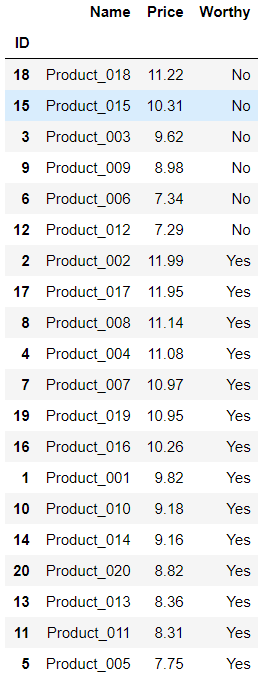
07.数据筛选、过滤 import pandas as pd students = pd.read_excel(r"C:\Users\67001\Desktop\Students.xlsx",index_col='ID') students
# 筛选年龄大于等于18小于30 def age_18_to_30(a): return 18 <= a < 30 # 筛选成绩大于等于85小于等于100 def level_a(s): return 85 <= s <= 100 # students = students.loc[students['Age'].apply(age_18_to_30)].loc[students['Score'].apply(level_a)] # 或 # students = students.loc[students.Age.apply(age_18_to_30)].loc[students.Score.apply(level_a)] # 或 students = students.loc[students.Age.apply(lambda a : 18 <= a < 30)].loc[students.Score.apply(lambda s : 85 <= s <= 100)] students
08.柱状图 import pandas as pd import matplotlib.pyplot as plt students = pd.read_excel(r"C:\Users\67001\Desktop\student.xlsx") students
students.plot.bar(x='Field',y='Number') plt.show()
students.sort_values(by='Number',inplace=True,ascending=False) students.plot.bar(x='Field',y='Number',color='orange',title='International Students by Field') # plt.tight_layout() plt.show()
plt.bar(students.Field,students.Number,color='orange') plt.xticks(students.Field,rotation='90') plt.xlabel('Field') plt.ylabel('Number') plt.title('International Students by Field',fontsize=16) #plt.tight_layout() plt.show()
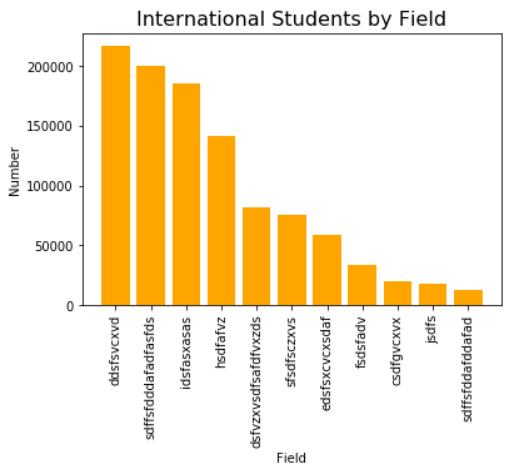
09.分组柱图、深度优化 import pandas as pd import matplotlib.pyplot as plt students = pd.read_excel(r"C:\Users\67001\Desktop\student1.xlsx") students
students.sort_values(by='2017',inplace=True,ascending=False) #排序 students.plot.bar(x='Field',y=['2016','2017'],color=['orange','red']) plt.title('International Students by Field',fontsize=16,fontweight='bold') plt.xlabel('Field',fontweight='bold') plt.ylabel('Number',fontweight='bold') plt.show()
students.plot.bar(x='Field',y=['2016','2017'],color=['orange','red']) plt.title('International Students by Field',fontsize=16,fontweight='bold') plt.xlabel('Field',fontweight='bold') plt.ylabel('Number',fontweight='bold') ax = plt.gca() # 拿到 x 轴 ax.set_xticklabels(students['Field'],rotation=45,ha='right') #将 Field 按照最右端旋转 45° plt.show()
students.plot.bar(x='Field',y=['2016','2017'],color=['orange','red']) plt.title('International Students by Field',fontsize=16,fontweight='bold') plt.xlabel('Field',fontweight='bold') plt.ylabel('Number',fontweight='bold') ax = plt.gca() # 拿到 x 轴 f = plt.gcf() #拿到图像 f.subplots_adjust(left=0.02,bottom=0.02) #调整图像比例 ax.set_xticklabels(students['Field'],rotation=45,ha='right') #将 Field 按照最右端旋转 45° plt.show()
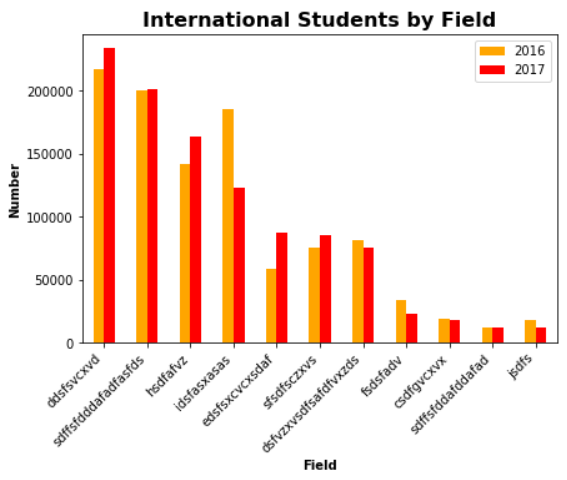
10.叠加柱状图、水平柱状图
11.饼图
12.折线趋势图、叠加区域图
13.散点图、直方图
14.密度图、数据相关性
15.多表联合(从VLOOKUP到JOIN) import pandas as pd students = pd.read_excel(r"C:\Users\67001\Desktop\Student_Score.xlsx",sheet_name='Student') scores = pd.read_excel(r"C:\Users\67001\Desktop\Student_Score.xlsx",sheet_name='Score') # students # scores # students = pd.read_excel(r"C:\Users\67001\Desktop\Student_Score.xlsx",sheet_name='Student',index_col='ID') # scores = pd.read_excel(r"C:\Users\67001\Desktop\Student_Score.xlsx",sheet_name='Score',index_col='ID') table = students.merge(scores,how='left',on='ID').fillna(0) table.Score = table.Score.astype(int) table
table = students.merge(scores,how='left',left_on=students.ID,right_on=scores.ID).fillna(0) table.Score = table.Score.astype(int) table
table.to_excel(r"C:\Users\67001\Desktop\StudentScore.xlsx")
16.数据校验、轴的概念 import pandas as pd students = pd.read_excel(r"C:\Users\67001\Desktop\Students.xlsx") students
数据校验方式一 def score_validation1(row): try: assert 0<=row.Score<=100 except: print(f'#{row.ID}\t student {row.Name} has an invalid score {row.Score}.') students.apply(score_validation1,axis=1) ''' #1 student Student_001 has an invalid score -40. #2 student Student_002 has an invalid score -30. #3 student Student_003 has an invalid score -20. #4 student Student_004 has an invalid score -10. #16 student Student_016 has an invalid score 110. #17 student Student_017 has an invalid score 120. #18 student Student_018 has an invalid score 130. #19 student Student_019 has an invalid score 140. #20 student Student_020 has an invalid score 150. 0 None 1 None 2 None 3 None 4 None 5 None 6 None 7 None 8 None 9 None 10 None 11 None 12 None 13 None 14 None 15 None 16 None 17 None 18 None 19 None dtype: object '''
17.把一列数据分割成两列 import pandas as pd employees = pd.read_excel(r"C:\Users\67001\Desktop\Employees.xlsx",index_col='ID') employees
df = employees['Full Name'].str.split() df ''' ID 1 [nihao, dsfjalk] 2 [sdfasf, sdflksjlf] 3 [dsjfs, sdfa] 4 [sdf, sfafadfasdf] 5 [sdfs, sdfsdfsa] 6 [sfdsf, dsfsfsdse] 7 [dshnj, dghvbff] 8 [fdvfd, iouih] 9 [dfgfp, fgbkkflit] 10 [fdg, dgiiuojv] 11 [df, fggbnvjv] 12 [dfg, fdfkjn] 13 [gfdkjio, fdgkm] 14 [gdfpo, fdggeq] 15 [qhjdh, jnjklkshjgkdsf] 16 [fdgk, fdjklbnfld] 17 [dfk, fdkgld] 18 [fdgjlkd, fdkjg] 19 [df, fdgkdfg] Name: Full Name, dtype: object ''' df = employees['Full Name'].str.split(' ',n=2,expand=True) # ' ' 表示分隔符,n 表示保留分割后的数量,expand 表示是否分列 df
employees['First Name'] = df[0] employees['Last Name'] = df[1] employees
employees['Last Name'] = df[1].str.upper() #变大写 employees
https://pandas.pydata.org/pandas-docs/version/0.23/api.html#string-handling 学习路径
18.求和、求平均、统计引导 import pandas as pd students = pd.read_excel(r"C:\Users\67001\Desktop\Students.xlsx",index_col='ID') students
temp = students[['Test_1','Test_2','Test_3']] result = temp.sum() print(result) print('-----------------') print(type(result)) # series 是一列数据 ''' Test_1 1459 Test_2 1579 Test_3 1462 dtype: int64 ----------------- <class 'pandas.core.series.Series'> ''' row_sum = temp.sum(axis=1) row_mean = temp.mean(axis=1) row_sum row_mean ''' ID 1 77.000000 2 84.000000 3 66.333333 4 74.666667 5 80.333333 6 71.333333 7 74.000000 8 71.333333 9 66.000000 10 83.666667 11 60.000000 12 80.000000 13 72.666667 14 82.666667 15 73.000000 16 56.000000 17 79.333333 18 81.666667 19 83.333333 20 82.666667 dtype: float64 ''' students['Total'] = row_sum students['Average'] = row_mean students
col_mean = students[['Test_1','Test_2','Test_3','Total','Average']].mean() col_mean['Name'] = 'Summary' col_mean ''' Test_1 72.95 Test_2 78.95 Test_3 73.1 Total 225 Average 75 Name Summary dtype: object ''' students = students.append(col_mean,ignore_index=True) students
19.定位、消除重复数据 import pandas as pd students = pd.read_excel(r"C:\Users\67001\Desktop\Students_Duplicates.xlsx",index_col='ID') students
students1 = students.drop_duplicates(subset='Name',inplace=False,keep='last') #删除重复数据留下最后一行 students1
dupe=students.duplicated(subset='Name') print(dupe.any()) print('=========================') print(dupe) print('=========================') print(type(dupe)) print('=========================') dupe1 = dupe[dupe == True] print(dupe1) print(dupe1.index) print('=========================') print(students.loc[dupe1.index]) ''' True ========================= ID 1 False 2 False 3 False 4 False 5 False 6 False 7 False 8 False 9 False 10 False 11 False 12 False 13 False 14 False 15 False 16 False 17 False 18 False 19 False 20 False 21 True 22 True 23 True 24 True 25 True dtype: bool ========================= <class 'pandas.core.series.Series'> ========================= ID 21 True 22 True 23 True 24 True 25 True dtype: bool Int64Index([21, 22, 23, 24, 25], dtype='int64', name='ID') ========================= Name Test_1 Test_2 Test_3 ID 21 Student_001 62 86 83 22 Student_002 77 97 78 23 Student_003 57 96 46 24 Student_004 57 87 80 25 Student_005 95 59 87 ''' students
20.旋转数据表(行-列) import pandas as pd videos = pd.read_excel(r"C:\Users\67001\Desktop\Videos.xlsx")
videos
table = videos.transpose() pd.options.display.max_columns=99 table
videos = pd.read_excel(r"C:\Users\67001\Desktop\Videos.xlsx",index_col='Month')
videos
table = videos.transpose() table
21.读取CSV、TSV、TXT文件中的数据 import pandas as pd student1 = pd.read_csv(r"C:\Users\67001\Desktop\Students.csv") #读取 CSV 文件 student2 = pd.read_csv(r"C:\Users\67001\Desktop\Students.tsv",sep='\t') #读取 tsv 文件 student3 = pd.read_csv(r"C:\Users\67001\Desktop\Students.txt",sep='|') #读取 txt 文件
22.透视表、分组、聚合(group by) import pandas as pd import numpy as np orders = pd.read_excel(r"C:\Users\67001\Desktop\Orders.xlsx") orders.head()
print(orders.Date.dtype) ''' datetime64[ns] ''' orders['Year'] = pd.DatetimeIndex(orders['Date']).year orders.head()
pt1 = orders.pivot_table(index='Category',columns='Year',values='Total',aggfunc=np.sum) pt1
groups = orders.groupby(['Category','Year']) s = groups['Total'].sum() c = groups['ID'].count() pt2 = pd.DataFrame({'sum':s,'count':c}) pt2
pt2.to_excel(r"C:\Users\67001\Desktop\部战队.xlsx",index=False)
23.线性回归、数据预测 import pandas as pd import matplotlib.pyplot as plt from scipy.stats import linregress sales = pd.read_excel(r"C:\Users\67001\Desktop\Sales.xlsx",dtype={'Month':str}) print(sales) ''' Month Revenue 0 2017.01 5.220 1 2017.02 4.076 2 2017.03 13.240 3 2017.04 6.929 4 2017.05 15.120 5 2017.06 9.609 6 2017.07 22.746 7 2017.08 27.489 8 2017.09 17.520 9 2017.10 17.220 10 2017.11 15.156 11 2017.12 39.026 12 2018.01 18.739 13 2018.02 29.785 14 2018.03 20.607 15 2018.04 35.445 16 2018.05 61.789 17 2018.06 57.702 18 2018.07 66.667 19 2018.08 38.202 20 2018.09 57.602 21 2018.10 56.047 22 2018.11 43.446 23 2018.12 59.057 ''' plt.bar(sales.index,sales.Revenue) plt.title("Sales") plt.xticks(sales.index,sales.Month,rotation=90) plt.show()
slope,intercept,r,p,std_err = linregress(sales.index,sales.Revenue) exp = sales.index*slope + intercept plt.scatter(sales.index,sales.Revenue) plt.plot(sales.index,exp,color='orange') # plt.title("Sales") plt.title(f"y={slope}*x + {intercept}") plt.xticks(sales.index,sales.Month,rotation=90) plt.show()
---------------------------------------------------------------------------
IndexError Traceback (most recent call last)
<ipython-input-4-1c1b92ea7b45> in <module>
4
5 plt.scatter(sales.index,sales.Revenue)
----> 6 plt.plot(sales.index,exp,color='orange')
7 # plt.title("Sales")
8 plt.title(f"y={slope}*x + {intercept}")
d:\program files\python37\lib\site-packages\matplotlib\pyplot.py in plot(scalex, scaley, data, *args, **kwargs)
2793 return gca().plot(
2794 *args, scalex=scalex, scaley=scaley, **({"data": data} if data
-> 2795 is not None else {}), **kwargs)
2796
2797
d:\program files\python37\lib\site-packages\matplotlib\axes\_axes.py in plot(self, scalex, scaley, data, *args, **kwargs)
1664 """
1665 kwargs = cbook.normalize_kwargs(kwargs, mlines.Line2D._alias_map)
-> 1666 lines = [*self._get_lines(*args, data=data, **kwargs)]
1667 for line in lines:
1668 self.add_line(line)
d:\program files\python37\lib\site-packages\matplotlib\axes\_base.py in __call__(self, *args, **kwargs)
223 this += args[0],
224 args = args[1:]
--> 225 yield from self._plot_args(this, kwargs)
226
227 def get_next_color(self):
d:\program files\python37\lib\site-packages\matplotlib\axes\_base.py in _plot_args(self, tup, kwargs)
397 func = self._makefill
398
--> 399 ncx, ncy = x.shape[1], y.shape[1]
400 if ncx > 1 and ncy > 1 and ncx != ncy:
401 cbook.warn_deprecated(
IndexError: tuple index out of range
![]()
24.条件格式 import pandas as pd import seaborn as sns students = pd.read_excel(r"C:\Users\67001\Desktop\Students.xlsx",index_col='ID') students # 设置分数小于60的字体颜色为红色 def low_score_red(s): color = 'red' if s<60 else 'black' return f'color:{color}' # 设置每一列分数最高的背景色为柠檬色 def highest_score_green(col): return ['background-color:lime' if s==col.max() else 'background-color:white' for s in col] students.style.applymap(low_score_red,subset=['Test_1','Test_2','Test_3']) \ .apply(highest_score_green,subset=['Test_1','Test_2','Test_3']) color_map = sns.light_palette('green',low = 1,high = 0,as_cmap=True) students students.style.background_gradient(color_map,subset=['Test_1','Test_2','Test_3']) students.style.background_gradient(cmap='Reds',low = 0,high = 1,subset=['Test_1','Test_2','Test_3']) student1 = students.style.bar(color='red',subset=['Test_1','Test_2','Test_3']) student1 # student1.to_excel(r"C:\Users\67001\Desktop\Students1.xlsx",index=False)
25.行操作集锦 page_001 = pd.read_excel(r"C:\Users\67001\Desktop\Students.xlsx",sheet_name='page_001') page_002 = pd.read_excel(r"C:\Users\67001\Desktop\Students.xlsx",sheet_name='page_002') print(page_001.head()) print(page_002.head()) ''' ID Name score 0 1 Student_001 90 1 2 Student_002 90 2 3 Student_003 90 3 4 Student_004 90 4 5 Student_005 90 ID Name score 0 21 Student_021 80 1 22 Student_022 80 2 23 Student_023 80 3 24 Student_024 80 4 25 Student_025 80 ''' # 拼接 Dataframe,生成新的索引 students = page_001.append(page_002).reset_index(drop=True) # students # 添加一行新的数据 # stu = pd.Series({'ID':41,'Name':'Lin','score':100}) # students = students.append(stu,ignore_index=True) # students # 修改单元格内容 # students.at[39,'Name'] = 'li' # students.at[39,'score'] = '88' # 替换一行内容 # stu = pd.Series({'ID':40,'Name':'lin','score':0}) # students.iloc[39] = stu # 插入行 # stu = pd.Series({'ID':100,'Name':'ixan','score':0}) # part1 = students[:20] # part2 = students[20:] # students = part1.append(stu,ignore_index=True).append(part2).reset_index(drop=True) # 删除行 # students.drop(index=[0,1],inplace=True) # students.drop(index=range(0,10),inplace=True) # students.drop(index=students[0:10].index,inplace=True) for i in range(5,15): students['Name'].at[i] = '' # 按条件删除行 missing = students.loc[students['Name'] == ''] # missing students.drop(index=missing.index,inplace=True) students = students.reset_index(drop=True) students ''' ID Name score 0 1 Student_001 90 1 2 Student_002 90 2 3 Student_003 90 3 4 Student_004 90 4 5 Student_005 90 5 16 Student_016 90 6 17 Student_017 90 7 18 Student_018 90 8 19 Student_019 90 9 20 Student_020 90 10 21 Student_021 80 11 22 Student_022 80 12 23 Student_023 80 13 24 Student_024 80 14 25 Student_025 80 15 26 Student_026 80 16 27 Student_027 80 17 28 Student_028 80 18 29 Student_029 80 19 30 Student_030 80 20 31 Student_031 80 21 32 Student_032 80 22 33 Student_033 80 23 34 Student_034 80 24 35 Student_035 80 25 36 Student_036 80 26 37 Student_037 80 27 38 Student_038 80 28 39 Student_039 80 29 40 Student_040 80 '''
26.列操作集锦 import pandas as pd import numpy as np page_001 = pd.read_excel(r"C:\Users\67001\Desktop\Students.xlsx",sheet_name='page_001') page_002 = pd.read_excel(r"C:\Users\67001\Desktop\Students.xlsx",sheet_name='page_002') # 列数据拼接 # students = pd.concat([page_001,page_002],axis=1) students = pd.concat([page_001,page_002]).reset_index(drop=True) # 追加一列 # students['Age'] = 25 # students['Age'] = range(0,len(students)) students['Age'] = np.arange(0,len(students)) # 删除列 students.drop(columns=['Age','score'],inplace=True) # 插入列 # students.insert(1,column='Foo',value=np.repeat('foo',len(students))) students.insert(1,column='A',value=students['ID']*2) # 修改列名 students.rename(columns={'Foo':'foo','Name':'name'},inplace=True) # 修改数据类型 students['ID'] = students['ID'].astype(float) for i in range(5,15): students['ID'].at[i] = np.nan # 删除空行 students.dropna(inplace=True) students ''' ID A foo name 0 1.0 2 foo Student_001 1 2.0 4 foo Student_002 2 3.0 6 foo Student_003 3 4.0 8 foo Student_004 4 5.0 10 foo Student_005 15 16.0 32 foo Student_016 16 17.0 34 foo Student_017 17 18.0 36 foo Student_018 18 19.0 38 foo Student_019 19 20.0 40 foo Student_020 20 21.0 42 foo Student_021 21 22.0 44 foo Student_022 22 23.0 46 foo Student_023 23 24.0 48 foo Student_024 24 25.0 50 foo Student_025 25 26.0 52 foo Student_026 26 27.0 54 foo Student_027 27 28.0 56 foo Student_028 28 29.0 58 foo Student_029 29 30.0 60 foo Student_030 30 31.0 62 foo Student_031 31 32.0 64 foo Student_032 32 33.0 66 foo Student_033 33 34.0 68 foo Student_034 34 35.0 70 foo Student_035 35 36.0 72 foo Student_036 36 37.0 74 foo Student_037 37 38.0 76 foo Student_038 38 39.0 78 foo Student_039 39 40.0 80 foo Student_040 '''
27.连接数据库
28.编写复杂方程
请你一定不要停下来 成为你想成为的人
感谢您的阅读,我是LXL


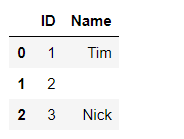


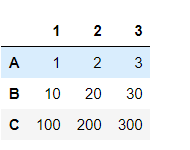
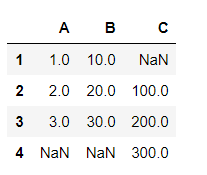

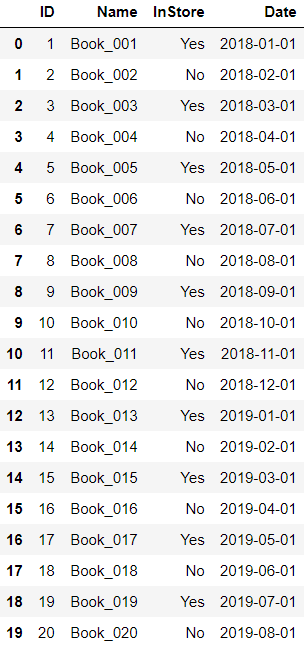
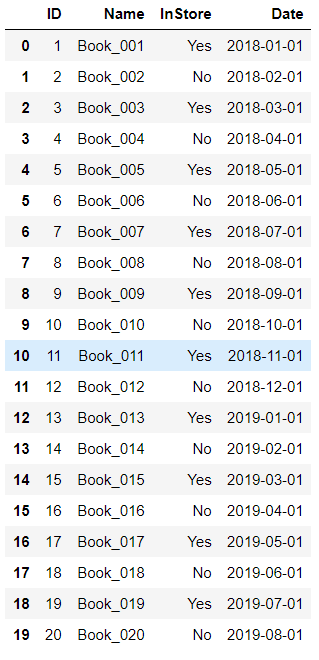
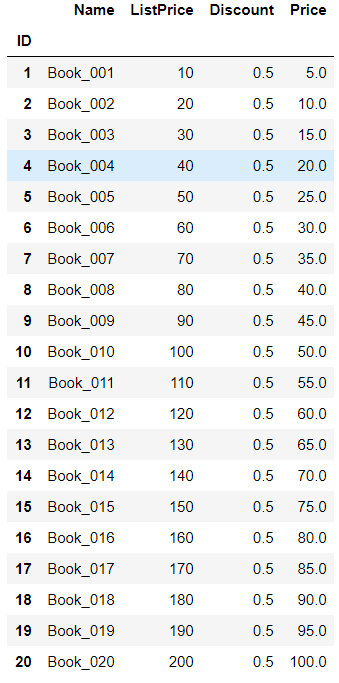
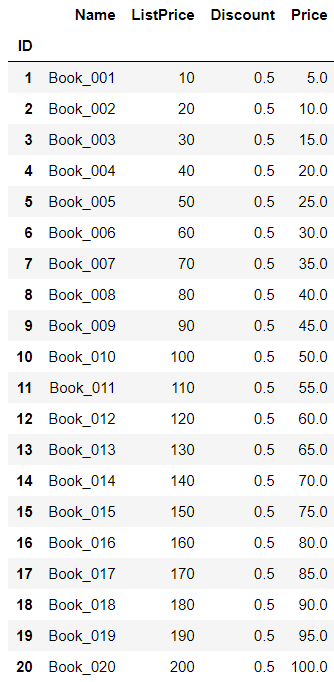
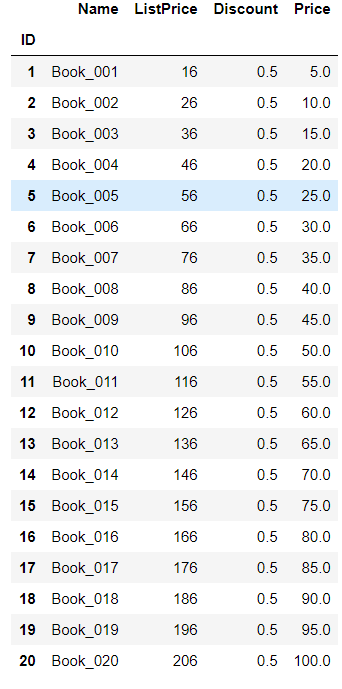



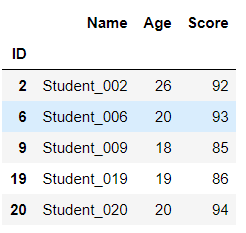
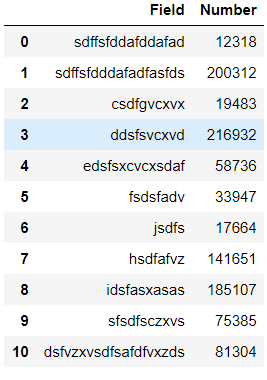

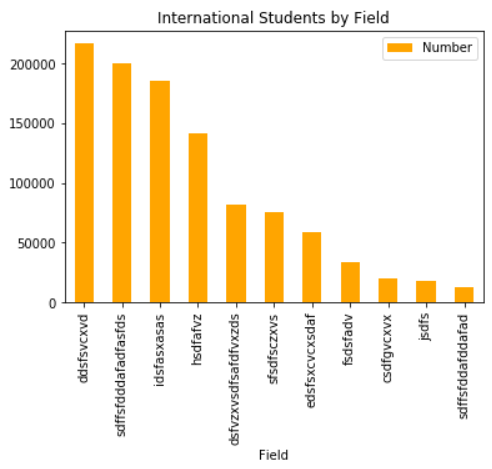
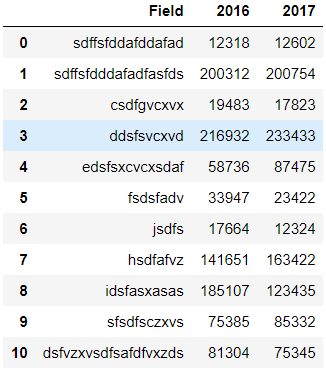

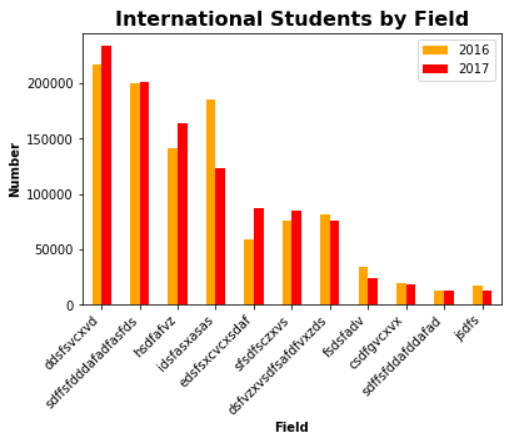
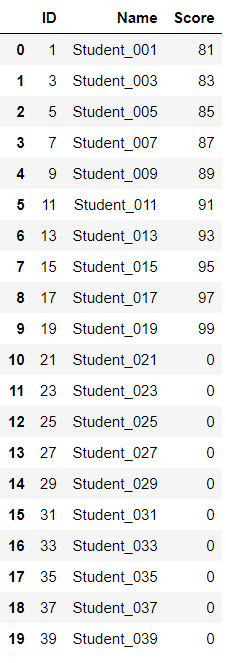
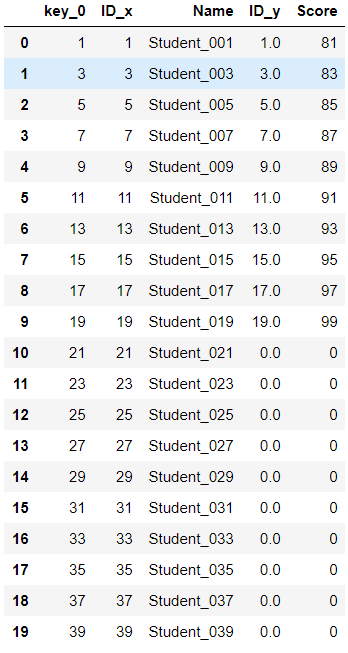
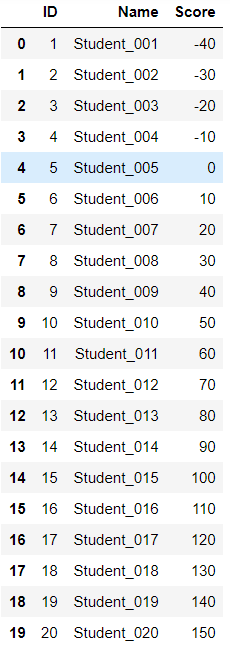








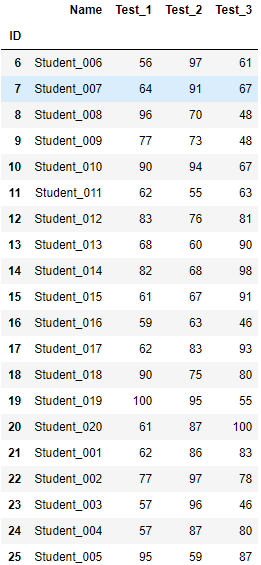



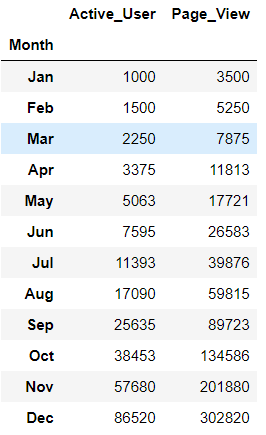

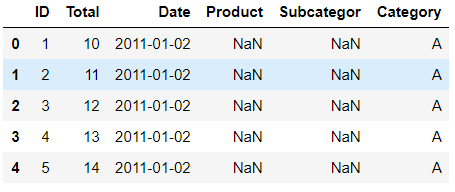




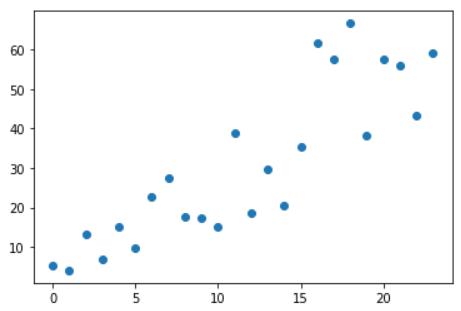

 浙公网安备 33010602011771号
浙公网安备 33010602011771号